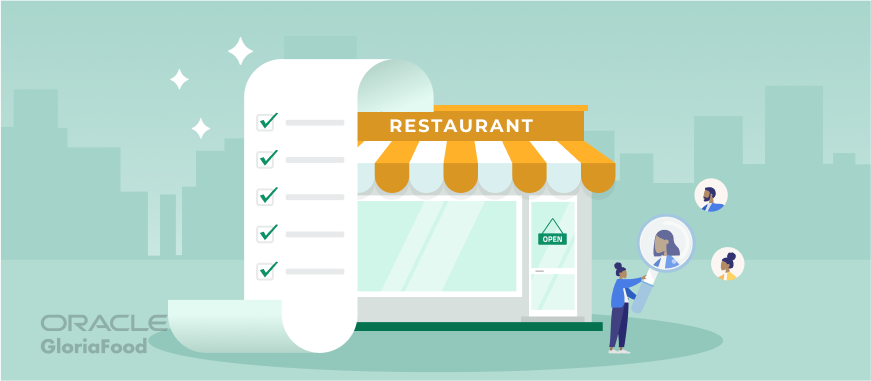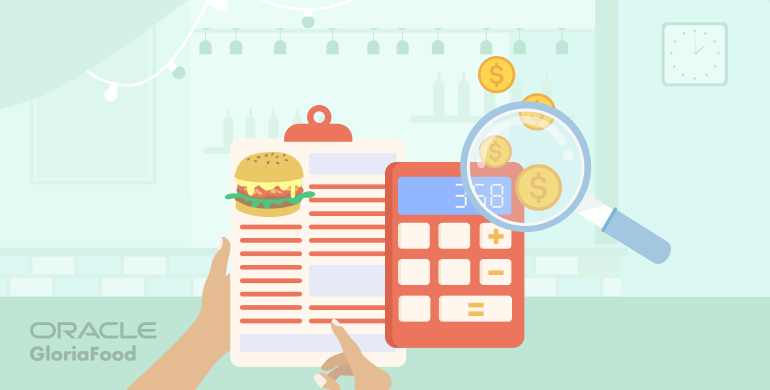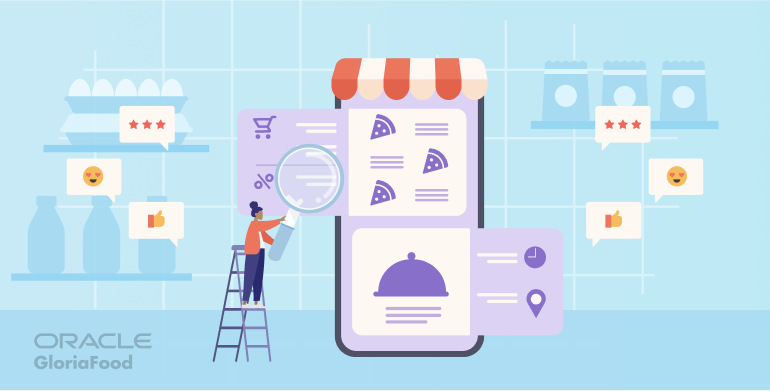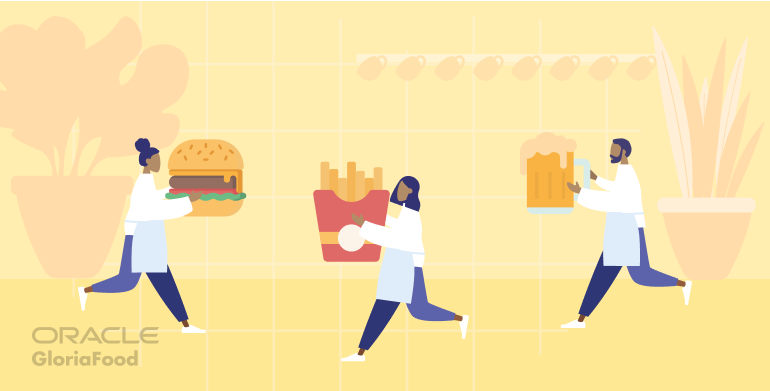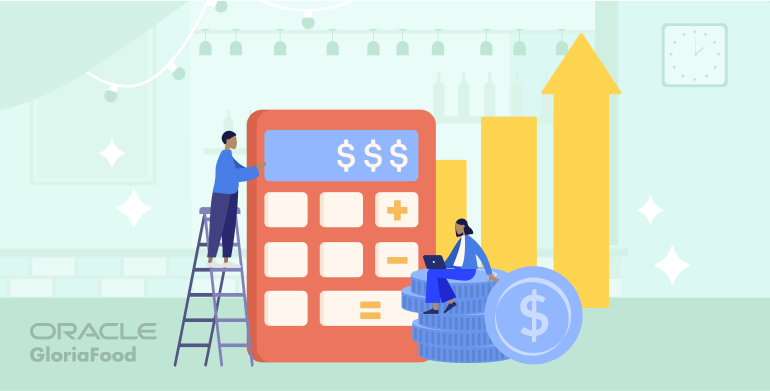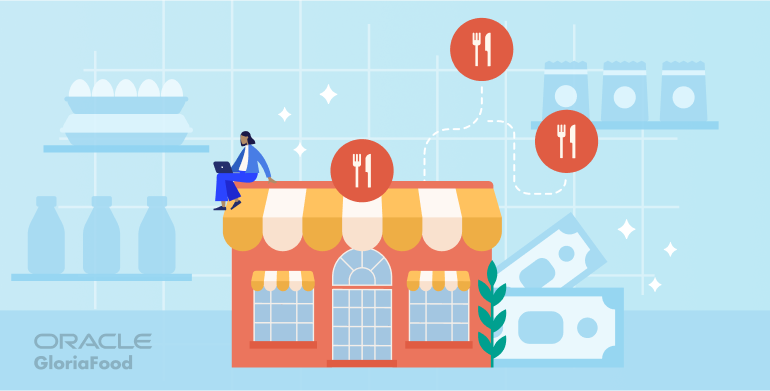- Why you must monitor restaurant performance metrics
- 20 restaurant performance metrics to keep a tab on
- 1. Gross Profit
- 2. Net Profit
- 3. Overhead Rate
- 4. Contribution Margin
- 5. Total sales
- 6. Average Check
- 7. Revenue per seat hour
- 8. Sales per labor hour
- 9. Table turnover rate
- 10. Employee turnover rate
- 11. Repeat purchase rate
- 12. Customer acquisition cost
- 13. Customer retention rate
- 14. Average rating score per month
- 15. Costs of goods sold
- 16. Food cost percentage
- 17. Labor cost percentage
- 18. Inventory turnover ratio
- 19. Break-even point
- 20. Waste and spoilage
- Final Words
How can you measure a food business’s success? While positive reviews are indicative of a good reputation and a big number of in-location clients would point to a fruitful business, these aren’t indicators of a profitable restaurant.
The only way to know for sure that you are earning more than you are spending is by monitoring restaurant performance metrics. If you want to find out how well your business is doing, use this article as your easy-to-follow guide:
Why you must monitor restaurant performance metrics
Running a business in the food industry is not like creating art, you can’t base your decisions on intuition or feelings. You can only rely on data in the form of restaurant performance metrics. Here are the benefits you will enjoy if you start monitoring them now:
- Identify your restaurant’s strengths: when you realize some choices bring in a lot of revenue, you can keep making them and use the identified strengths to further promote your business. For example, you may discover that adding an online ordering system to your website has doubled your sales, so you should keep promoting online orders;
Increase your sales by allowing customers to order your food online
Install an online ordering system to your website for free
- Discover areas for improvement: you may find that you are overspending on inventory and not using all the ingredients or that you have a slow table turnover. Each situation can easily be improved now that you know it is a problem.
Moreover, if you pair the metrics information with setting up some efficient restaurant key performance indicators, you are on the right road to success. Check out our in-depth guide:
20 Essential Restaurant KPIs You Should Be Tracking and How to Measure Them
20 restaurant performance metrics to keep a tab on
We’ve compiled a list with the most important restaurant metrics and we provide you with both a formula to calculate them and the reason they are relevant for your business.
1. Gross Profit
This restaurant metric shows you how much money you make after you pay the costs associated with producing menu items. Ideally, your gross profit margin should be around 70% to account for the other business expenses.
Formula:
2. Net Profit
The net profit margin is the best indicator of how profitable your business is because it subtracts all the costs of your business. When you notice a constant profit month after month, you can consider expanding your restaurant with new locations.
Formula:
3. Overhead Rate
Your overhead expenses are the ones you pay even if your restaurant is closed, such as rent, utilities, taxes, insurance, and permits. To determine the overhead rate, you also need a cost driver, in this example the total amount of meals served.
You need this metric to realize you should price your menu items to cover each cost of running a restaurant, not just the ingredients.
Formula:
4. Contribution Margin
This is one of the restaurant performance metrics that helps you create a profitable menu. The contribution margin measures the profitability of each menu item. Consider placing the most profitable menu items near the most expensive ones to persuade people to order them.
Formula:
5. Total sales
There is no formula for total sales, you will have to use an efficient POS, such as GloriaFood POS to track the data for a certain period. If you want to increase your number of sales, consider:
- Expanding your sales online by allowing clients to order directly from your website;
- Claiming your Google Business Profile to get more clients to notice you online;
- Getting a sales and SEO-optimized website that will rank you high in Google searches where customers will immediately notice you.

6. Average Check
This is one of the most useful restaurant performance metrics because it helps you identify if you need to do more to encourage clients to spend money. If you want to increase the average check, do this:
- Allow customers to customize their dishes with toppings and sizes that come at an additional price;
- Create promotions with a minimum order value, for example, free delivery for orders over $70 or free dessert on any order over $60;
- Create tempting combo meals that have a main, a side, and a drink. Clients will see them as high value for money and will spend more to buy them.

Formula:
7. Revenue per seat hour
Using this metric, you can find out how much revenue your restaurant generates for each hour a table is occupied. You can calculate it for different periods and then find ways to improve the results, like changing your opening hours.
Formula:
8. Sales per labor hour
This is one of the restaurant performance metrics that helps you measure your employees’ productivity, which will prove helpful when you have performance reviews. You can improve the metric by optimizing staff scheduling and providing additional training for employees.
Formula:
9. Table turnover rate
This metric shows you how much time your guests spend in the restaurant. While it is important to provide a great experience to each client, having a higher table turnover also means a higher profit.
Therefore, you can increase table turnover while still maintaining customer happiness by using technology to make ordering and paying faster, such as a QR code restaurant menu.
Formula:
10. Employee turnover rate
If you have a high employee turnover rate, it means you are bleeding money. It costs much more to keep looking for new employees than to keep the existing ones happy and productive. Moreover, it can affect team unity and morale if the staff keeps changing.
Formula:
11. Repeat purchase rate
By calculating the repeat purchase rate, you can identify if your menu items are appreciated by customers. You can monitor each menu item and see if clients love them so much that they keep coming back for them.
Formula:
12. Customer acquisition cost
Marketing expenses can add up and eat into your profit. If your promotional efforts are successful and they bring in many new customers and increase the number of return clients, they are worth it. If not, you should look into other marketing strategies that may be more efficient for your business.
Formula:
13. Customer retention rate
There are only so many people in your area, so, if you want to remain open for a long time, you need people to keep coming back. To increase customer retention rate, try these tips:
- Use email marketing campaigns to remind people of your restaurant and tempt them to come back;
- Set up rewards for loyalty, such as a free dessert after you place three orders, or a 50% discount after you place five orders.

Formula:
14. Average rating score per month
There is no formula to calculate one of the most relevant restaurant performance metrics. You just have to go on the platforms you have an account and allow reviews, such as Google, Facebook, TripAdvisor, and Yelp, and check the average score each month.
Ideally, you should notice it go up if you put in the effort to improve your business by listening to your customer’s feedback.
15. Costs of goods sold
Determining the costs of goods sold will help you price your items to enjoy a profit at the end of each month. By calculating the costs of goods sold, you will learn how much it costs to produce each menu item, including ingredients and packaging.
Formula:
16. Food cost percentage
The average restaurant food cost percentage for a healthy business is between 20% and 40%. If you notice yours is higher and you struggling to turn a profit, you can:
- Make your menu smaller, focusing less on quantity and more on a few quality dishes;
- Make portion size smaller, so you can keep the price low;
- Make the most of your ingredients by using each part of them.
Formula:
17. Labor cost percentage
This is one of the most important restaurant performance metrics because labor costs will take up most of your budget. Ideally, your labor cost percentage should go no higher than 60%.
To spend less on employees, consider changing your service type and relying more on technology so you can succeed with a smaller number of employees. For example, you could allow customers to place orders via QR code at the table. You can do so easily and for free with our online ordering system:

Formula:
18. Inventory turnover ratio
Inventory problems like overstocking or understocking will affect your restaurant’s efficiency and client satisfaction. For example, if you run out of ingredients, clients will be disappointed when they can’t order their desired dish.
You can prevent this by marking your items as out of stock in your online restaurant menu each time you encounter this problem and easily change it back when you get new inventory.

Formula:
19. Break-even point
The first goal for your business should be to reach the break-even point, where your total revenue equals your total costs. This is one of the restaurant performance metrics that shows if you are on the floating line, not making a profit, but not losing money either.
Formula:
20. Waste and spoilage
Food waste is not only a problem for the environment but also for your business because it costs you money. To increase profit and lower food waste, follow these tips:
- Avoid overstocking because you won’t be able to use perishable items in time;
- Store ingredients properly to help them last longer;
- Create promotions to sell menu items before they go bad. You can set up a variety of promotions in seconds with GloriaFood:

Formula:
Final Words
Monitoring restaurant performance metrics is a must if you want to make data-based decisions that lead you to success.
Start with the reports module embedded in our online ordering system that gives you access to invaluable information such as the number and value of orders, number of new and returning clients, and what dishes sell best.
Get access to important restaurant performance metrics
Use the Reports Module embedded in the GloriaFood online ordering system
- Why you must monitor restaurant performance metrics
- 20 restaurant performance metrics to keep a tab on
- 1. Gross Profit
- 2. Net Profit
- 3. Overhead Rate
- 4. Contribution Margin
- 5. Total sales
- 6. Average Check
- 7. Revenue per seat hour
- 8. Sales per labor hour
- 9. Table turnover rate
- 10. Employee turnover rate
- 11. Repeat purchase rate
- 12. Customer acquisition cost
- 13. Customer retention rate
- 14. Average rating score per month
- 15. Costs of goods sold
- 16. Food cost percentage
- 17. Labor cost percentage
- 18. Inventory turnover ratio
- 19. Break-even point
- 20. Waste and spoilage
- Final Words


